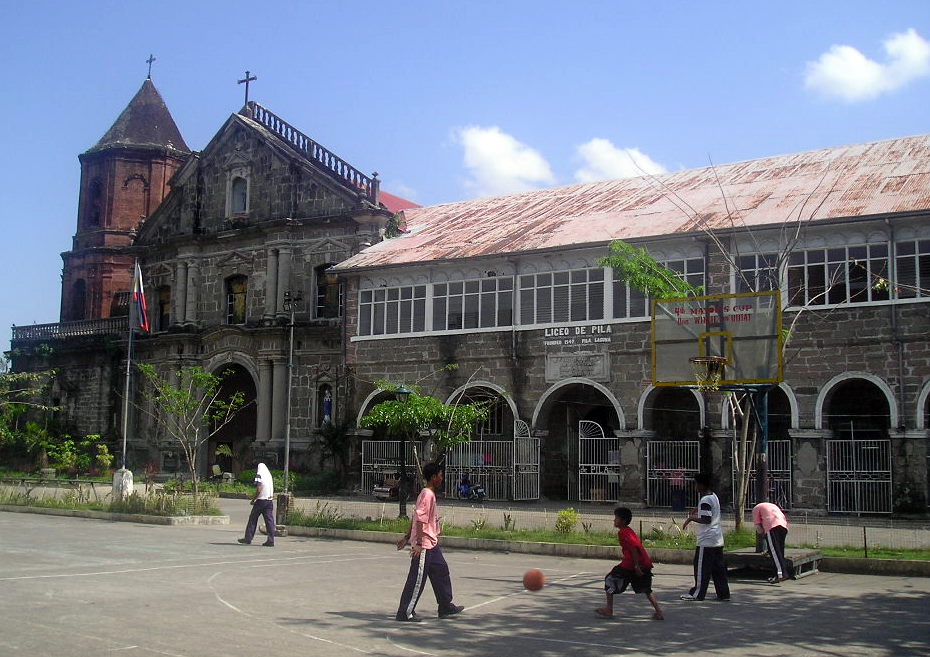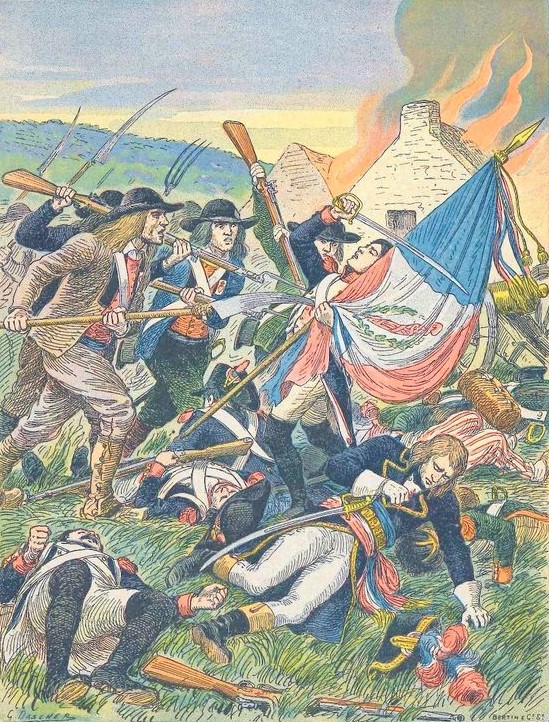|
St. Anthony Of Padua
Anthony of Padua, OFM, (; ; ) or Anthony of Lisbon (; ; ; born Fernando Martins de Bulhões; 15 August 1195 – 13 June 1231) was a Portuguese Catholic priest and member of the Order of Friars Minor. Anthony was born and raised by a wealthy family in Lisbon, Portugal, and died in Padua, Italy. Noted by his contemporaries for his powerful preaching, expert knowledge of scripture, and undying love and devotion to the poor and the sick, he was one of the most quickly canonized saints in church history, being canonized less than a year after his death. He was proclaimed a Doctor of the Church by Pope Pius XII on 16 January 1946. Life Early years Anthony was born Fernando Martins de Bulhões in Lisbon, Portugal. While 15th-century writers state that his parents were Vicente Martins and Teresa Pais Taveira, and that his father was the brother of Pedro Martins de Bulhões, the ancestor of the Bulhão or Bulhões family, Niccolò Dal-Gal views this as less certain. His wealt ... [...More Info...] [...Related Items...] OR: [Wikipedia] [Google] [Baidu] |
Saint
In Christianity, Christian belief, a saint is a person who is recognized as having an exceptional degree of sanctification in Christianity, holiness, imitation of God, likeness, or closeness to God in Christianity, God. However, the use of the term ''saint'' depends on the context and Christian denomination, denomination. In Anglican Communion, Anglican, Oriental Orthodox, and Lutheranism, Lutheran doctrine, all of their faithful deceased in Heaven are considered to be saints, but a selected few are considered worthy of greater honor or emulation. Official Ecclesiastical polity, ecclesiastical recognition, and veneration, is conferred on some denominational saints through the process of canonization in the Catholic Church or glorification in the Eastern Orthodox Church after their approval. In many Protestant denominations, and following from Pauline usage, ''saint'' refers broadly to any holy Christian, without special recognition or selection. While the English word ''saint'' ... [...More Info...] [...Related Items...] OR: [Wikipedia] [Google] [Baidu] |
Sailors
A sailor, seaman, mariner, or seafarer is a person who works aboard a watercraft as part of its crew, and may work in any one of a number of different fields that are related to the operation and maintenance of a ship. While the term ''sailor'' has its etymological roots from sailing, that is a time when sailing ships were the main mode of transport at sea, it now refers to the personnel of all watercraft regardless of the type of vessel, boat or ship. It encompasses people who operate ships professionally, be it for a military (navy) or civilian (merchant navy) or for Sailing (sport), sports or recreation. In a navy, there may be further distinctions: ''sailor'' may refer to any member of the navy even if they are based on land, while Seaman (rank), ''seaman'' may refer to a specific enlisted rank. Additionally, fisherman are seen as a distinct type of sailor, that is those engaged in fishing. Sailors have existed from the earliest periods in history as people as people used b ... [...More Info...] [...Related Items...] OR: [Wikipedia] [Google] [Baidu] |
Camaligan, Camarines Sur
Camaligan, officially the Municipality of Camaligan (; ), is a municipality in the province of Camarines Sur, Philippines. According to the 2020 census, it has a population of 25,036 people. Camaligan rapidly became an urban town during the 1990s. Camaligan is part of the Metro Naga Urban Area. The town is home to the oldest known pre-colonial site in the Bicol region, dating 500 AD to 600 AD, making it an undeclared important archaeological zone.Escandor, Juan J"1500-yr-old artifacts found in CamSur" ''Inquirer.net''. 18 August 2017. Retrieved June 16, 2019. Etymology The origin of the town and its name can be traced back to the early settlers of the place. Known as the ''cortadores'', or woodcutters, to the early Spanish colonizers who came to the place in the early 1700s, the settlers cut timbers from nearby mountains located upriver or around San Miguel Bay and made this as their form of living. Out of these timbers, they hewed out canoes or '' bancas'' which they sto ... [...More Info...] [...Related Items...] OR: [Wikipedia] [Google] [Baidu] |
Iriga, Camarines Sur
Iriga, officially the City of Iriga (Rinconada Bikol: ''Syudad ka Iriga''; ; ), is a component city in the province of Camarines Sur, Philippines. According to the 2020 census, it has a population of 114,457 people. History Barely half a century after Ferdinand Magellan set foot in the Philippines on March 16, 1521, Iriga, now a city, was only a visita of Nabua, Provincia de Ambos Camarines. Because of the disastrous floods that occur during rainy seasons in suburban Poblacion of Nabua, Father Felix de Huertas, the then parish priest, advised the farmers to move to I-raga (donde hay tierra or where there is land) where they can plant their crops without fear of being under flooded. The flood victims of Nabua who moved earlier and followed the suggestions of their parish priest were the fortunate beneficiaries of the harvest of their agricultural plantation coming from the rich and fertile soils of I-raga, more so, those who planted at the foot of Sumagang Mountain (Mountain ... [...More Info...] [...Related Items...] OR: [Wikipedia] [Google] [Baidu] |
Pila, Laguna
Pila, officially the Municipality of Pila (), is a municipality in the province of Laguna, Philippines. According to the 2020 census, it has a population of 54,613 people. The town of Pila is the site for some well-preserved houses dating back to the Spanish period as well as the old Saint Anthony of Padua Parish Church, the first Antonine church in the Philippines. History Early history Pila and adjacent towns along the shores of Laguna de Bay are considered by archaeologists as one of the oldest settlements in the Philippines. The community is one of three such concentrations of population known archaeologically to have been in place before A.D. 1000. Archaeologists recovered in Pinagbayanan potteries and artifacts that indicate considerable settlement in the area during the Late Tang dynasty (900 A.D.). Archaeologists also ancient horse bones ending the debate on whether the Spaniards brought them or not. The scientists were able to uncover Philippines’ oldest cremato ... [...More Info...] [...Related Items...] OR: [Wikipedia] [Google] [Baidu] |
Albania
Albania ( ; or ), officially the Republic of Albania (), is a country in Southeast Europe. It is located in the Balkans, on the Adriatic Sea, Adriatic and Ionian Seas within the Mediterranean Sea, and shares land borders with Montenegro to the northwest, Kosovo to the northeast, North Macedonia to the east and Greece to the south. With an area of , it has a varied range of climatic, geological, hydrological and morphological conditions. Albania's landscapes range from rugged snow-capped mountains in the Accursed Mountains, Albanian Alps and the Korab, Central Mountain Range, Albania#Skanderbeg Mountains, Skanderbeg, Pindus and Ceraunian Mountains, to fertile lowland plains extending from the Albanian Adriatic Sea Coast, Adriatic and Albanian Ionian Sea Coast, Ionian seacoasts. Tirana is the capital and largest city in the country, followed by Durrës, Vlorë, and Shkodër. Albania was inhabited by several List of Illyrian peoples and tribes, Illyrian tribes, among them the A ... [...More Info...] [...Related Items...] OR: [Wikipedia] [Google] [Baidu] |
Brazil
Brazil, officially the Federative Republic of Brazil, is the largest country in South America. It is the world's List of countries and dependencies by area, fifth-largest country by area and the List of countries and dependencies by population, seventh-largest by population, with over 212 million people. The country is a federation composed of 26 Federative units of Brazil, states and a Federal District (Brazil), Federal District, which hosts the capital, Brasília. List of cities in Brazil by population, Its most populous city is São Paulo, followed by Rio de Janeiro. Brazil has the most Portuguese-speaking countries, Portuguese speakers in the world and is the only country in the Americas where Portuguese language, Portuguese is an Portuguese-speaking world, official language. Bounded by the Atlantic Ocean on the east, Brazil has a Coastline of Brazil, coastline of . Covering roughly half of South America's land area, it Borders of Brazil, borders all other countries and ter ... [...More Info...] [...Related Items...] OR: [Wikipedia] [Google] [Baidu] |
Portugal
Portugal, officially the Portuguese Republic, is a country on the Iberian Peninsula in Southwestern Europe. Featuring Cabo da Roca, the westernmost point in continental Europe, Portugal borders Spain to its north and east, with which it shares Portugal-Spain border, the longest uninterrupted border in the European Union; to the south and the west is the North Atlantic Ocean; and to the west and southwest lie the Macaronesia, Macaronesian archipelagos of the Azores and Madeira, which are the two Autonomous Regions of Portugal, autonomous regions of Portugal. Lisbon is the Capital city, capital and List of largest cities in Portugal, largest city, followed by Porto, which is the only other Metropolitan areas in Portugal, metropolitan area. The western Iberian Peninsula has been continuously inhabited since Prehistoric Iberia, prehistoric times, with the earliest signs of Human settlement, settlement dating to 5500 BC. Celts, Celtic and List of the Pre-Roman peoples of the Iberia ... [...More Info...] [...Related Items...] OR: [Wikipedia] [Google] [Baidu] |
Ysleta Del Sur Pueblo
Ysleta del Sur Pueblo or Tigua Pueblo is a Native American Pueblo and federally recognized tribe in the Ysleta section of El Paso, Texas. Its members are Southern Tiwa people who had been displaced from Spanish New Mexico from 1680 to 1681 during the Pueblo Revolt against the Spaniards. The people and language are called Tigua (pronounced ''tiwa''). They have maintained a tribal identity and lands in Texas. Spanish mostly replaced the indigenous language in the early 1900s, and today, English is increasingly gaining ground in the community. Today there are efforts to revive the indigenous language. They are one of three federally recognized tribes in Texas. Tribal government As of 2022, E. Michael Silvas is the governor of Ysleta del Sur Pueblo. The 2021 Tribal Council consists of Sheriff Bernardo Gonzales, Councilman Rudy Cruz Jr., Councilman Rafael Gomez Jr., Governor E. Michael Silvas, Cacique Jose Sierra Sr., Lt. Governor Adam Torres, War Captain Javier Loera, Councilma ... [...More Info...] [...Related Items...] OR: [Wikipedia] [Google] [Baidu] |
Indigenous Peoples Of The Americas
In the Americas, Indigenous peoples comprise the two continents' pre-Columbian inhabitants, as well as the ethnic groups that identify with them in the 15th century, as well as the ethnic groups that identify with the pre-Columbian population of the Americas as such. These populations exhibit significant diversity; some Indigenous peoples were historically hunter-gatherers, while others practiced agriculture and aquaculture. Various Indigenous societies developed complex social structures, including pre-contact monumental architecture, organized city, cities, city-states, chiefdoms, state (polity), states, monarchy, kingdoms, republics, confederation, confederacies, and empires. These societies possessed varying levels of knowledge in fields such as Pre-Columbian engineering in the Americas, engineering, Pre-Columbian architecture, architecture, mathematics, astronomy, History of writing, writing, physics, medicine, Pre-Columbian agriculture, agriculture, irrigation, geology, minin ... [...More Info...] [...Related Items...] OR: [Wikipedia] [Google] [Baidu] |
Counter-revolutionaries
A counter-revolutionary or an anti-revolutionary is anyone who opposes or resists a revolution, particularly one who acts after a revolution has occurred, in order to try to overturn it or reverse its course, in full or in part. The adjective "counter-revolutionary" pertains to movements that would restore the state of affairs, or the principles, that prevailed during a pre-revolutionary era. Definition A counter-revolution is opposition or resistance to a revolutionary movement. It can refer to attempts to defeat a revolutionary movement before it takes power, as well as attempts to restore the old regime after a successful revolution. Europe France The word "counter-revolutionary" originally referred to thinkers who opposed themselves to the 1789 French Revolution, such as Joseph de Maistre, Louis de Bonald or, later, Charles Maurras, the founder of the ''Action Française'' monarchist movement. More recently, it has been used in France to describe political movements t ... [...More Info...] [...Related Items...] OR: [Wikipedia] [Google] [Baidu] |
Mail Carrier
A mail carrier, also referred to as a mailman, mailwoman, mailperson, postal carrier, postman, postwoman, postperson, person of post, letter carrier (in American English), or colloquially postie (in Australia, Canada, New Zealand, and the United Kingdom), is an employee of a post office or postal service who delivers mail and parcel post to residences and businesses. The term "mail carrier" came to be used as a gender-neutral substitute for "mailman" soon after women began performing the job. In the Royal Mail, the official name changed from "letter carrier" to "postman" in 1883, and "postwoman" has also been used for many years. United States In the United States, there are three types of mail carriers: City Letter Carriers, who are represented by the National Association of Letter Carriers; Rural Carriers, who are represented by the National Rural Letter Carriers' Association; and Highway Contract Route carriers, who are independent contractors. While union membership is vol ... [...More Info...] [...Related Items...] OR: [Wikipedia] [Google] [Baidu] |





